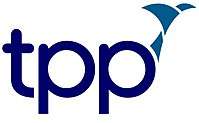The Phoenix Partnership
 | |
| Industry | |
|---|---|
| Founded | 1997 in Leeds, United Kingdom |
| Founder | Frank Hester OBE (CEO) |
| Headquarters | Horsforth, Leeds |
| Products | |
| Website |
www |
The Phoenix Partnership (TPP) is a software company based in Horsforth, Leeds. TPP develop and supply clinical software including SystmOne, which currently holds over 48 million patient records in the UK.[1]
History
The Phoenix Partnership was formed in 1997 by Frank Hester OBE who - after seeing the inefficiency of a paper-based data record system - used his knowledge in software to create a patient-record storing system that would help GPs give greater and more efficient services for their patients. The system that was created, SystmOne, was developed the following year as a clinical IT system that linked a GP practice and a diabetes service in Bradford, UK. Since then, SystmOne has been developed for use by healthcare professionals in primary, secondary and social care across the UK, covering over 6,000 NHS organisations, more than 2,600 GP practices and 142 prisons.[1] TPP hit their first 1 million patient records in 2003. SystmOne went on to become the only patient-record system used by GPs in Bradford, and is a key part of the Born in Bradford research scheme.[2]
Growth
By 2012, TPP's SystmOne held enough patient records that it could be used as a research database. In partnership with the University of Leeds and the UK Government's Technology Strategy Board, in May TPP launched ResearchOne as a not-for-profit health and care research database. In just two years, ResearchOne had such a considerable impact on the health service the TPP Knowledge Transfer Partnership received a 'best of the best' award from Innovate UK for their positive impact on healthcare research.[3]
Being an all-in-one, centrally-hosted system TPP reached a milestone when, by June 2013, 100% of GP practices in Bradford, Airedale and Milton Keynes had adopted SystmOne.[2][4] In the same year, TPP continued their commitment to forward thinking technology by creating a SystmOnline app, available on iOS and Android, which would allow users to view their own Electronic Medical Record (EMR) as well as booking appointments and managing medication from anywhere.[5]
TPP significantly increased its market opportunities when former Prime Minister, David Cameron, invited TPP on trading missions to both India and China in 2013.[6][7] By January of the following year, TPP signed its first MOU with a Chinese province, the Zheijang provincial centre for disease prevention and control (CDC).[8] By 2016, TPP signed its first contract in the Middle East when it agreed with Qatari Integrated Intelligence Services to deliver SystmOne to the private healthcare sector across Qatar, including approximately 300 primary care sites across Qatar.[9]
In 2015, TPP's rapid growth and significant impact on healthcare in the UK attracted the attention of former Prime Minister, David Cameron, who visited the in-progress building site of new TPP Head Office. Cameron gave a speech stating “What [TPP] is doing here is incredible… Companies like TPP keep the UK at the forefront of innovation… TPP is an example of a great British business with immense potential.”[10] The significance of TPP's work was reiterated in the same year when CEO, Frank Hestor, received an OBE for his contributed to healthcare in the UK.[11] A further milestone was achieved in 2015 when TPP reached a record 40 million unique patient records, with more than 6,000 organisations using SystmOne across 24 different health settings.[1]
2016 Onward
Early 2016, TPP moved into new Company Headquarters after the £22million construction was completed. The new HQ gave the rapidly growing company the space to expand, with the possibility of hiring over 600 more employees. The new HQ is based in Horsforth, the same place in West Yorkshire in which TPP was founded 19 years before.
The company extension gave TPP the opportunity to continue expanding their customer-base in the UK, Middle East and China. Since the move, TPP have enjoyed an abundance of recognitions, awards and premium deals. TPP now holds over 48 million patient records and 100% system availability, as verified by NHS Digital.[1][12]
Data Breaches
In 2017 the TPP software, SystmOne was found to have serious compliance concerns by the Information Commissioners Office. This affected 2700 GP practices in the UK and affected a new data-sharing feature in the software.[13]
Between March 2015 and June 2018, another breach due to the SystmOne software occurred affecting the data of 150,000 patients. This shared the data of patients who had made a type 2 opt-out (which meant they did not allow their data to be used for anything other than their own clinical care). TPP offered an unreserved apology for the breach and are currently under investigation from the ICO. A statement to parliament regarding the breach was read out by the health minister and patients were informed via letter.[14]
References
- 1 2 3 4 "TPP Factfile". Retrieved 3 August 2017.
- 1 2 "100% of GPs in Bradford use SystmOne". Born in Bradford. Retrieved 4 August 2017.
- ↑ "TPP KTP wins 'best of best' award". Retrieved 2 August 2017.
- ↑ "100% SystmOne coverage in Milton Keynes". Retrieved 3 August 2017.
- ↑ "SystmOnline app released onto app store". Retrieved 3 August 2017.
- ↑ "TPP part of PM's trade mission to India". Retrieved 3 August 2017.
- ↑ "TPP join PM on China trade mission". Retrieved 3 August 2017.
- ↑ "TPP sign first MOU with China". Retrieved 3 August 2017.
- ↑ "TPP signs first Middle East contract in Qatar". Retrieved 3 August 2017.
- ↑ "Prime Minister visits TPP's new HQ". Retrieved 3 August 2017.
- ↑ "TPP's Founder & CEO collects OBE". Retrieved 3 August 2017.
- ↑ "100% Availability". Retrieved 4 August 2017.
- ↑ "Thousands of practices unaware they could be 'in breach of data rules'". Pulse Today. Retrieved 2018-07-24.
- ↑ "'Coding' cockup blamed for NHS cough-up of confidential info against patients' wishes". Retrieved 2018-07-24.